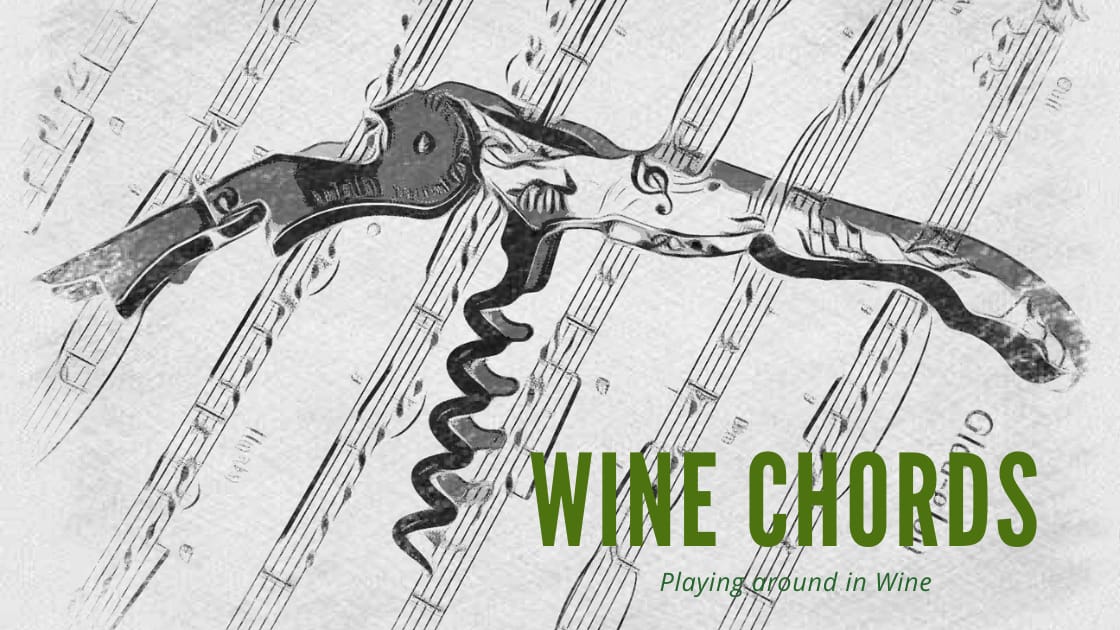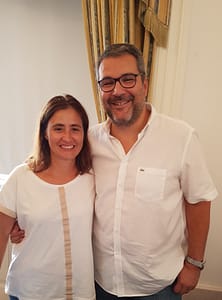During the CoVid pandemia a lot has changed. As we all know, there is much less travel, and even wine presentations and interviews are done digitally. This is the first time I had the chance to attend the programs of Norwegian importer Vinarius through their partner Vinestor in the program series Vinosus. The programs are presented via their YouTube channel. It’s interactive, in that the audience can post commentaries and questions to the producer. The importer is hosting the program, but it’s the producer that gives the information about the estate, its philosophy and the wines.
Filipa Pato & WIlliam Wouters are found in Óis do Bairro, Bairrada, Portugal. Filipa is daughter of the well-known producer Luís Pato (who lives nearby in this small settlement). Her husband William Wouters from Belgium is a profiled sommelier. I have met them several times, also once during the pandemic. Here is a short write-up from an annual fair that will be held again this summer. I have met Filipa and her father several times. These pictures are from a visit to hers and William’s home and winery 2017.
Filipa was recently appointed winemaker of the year 2020 by the leading wine magazine Revista de Vinhos, so it was maybe natural that she was chosen as the first Portuguese profile in this wine program series.
Wine is running in Filipa’s veins, as her grandparents were vinegrowers and bottled wine already in the 1950’s. Her father started in the 80’s, when the country was more open, so that export was also possible. Her own studies began in the nearby Coimbra university (the oldest in the country), and she had the opportunity to study wine as different places as Argentina, Australia – and Bordeaux – before coming back to her native village in Portugal. She tells that having travelled som much it was easy to realize the potential for Portugal. As the country had been isolated for such a long time, much of the identity was still kept. This advantage was important for her when she came back in 2001 and started to work with her father. But at the same time they agreed that she should have a small project of her own, starting with some wonderful vineyards that otherwise would have been abandoned. In 2006 she met her husband William in Belgium, who is in a family of restaurateurs, and soon they developed their own winery. They decided to convert to biodynamics ten years ago.
Now 17 hectares, very divided, some very small, and in several municipalities, each with their own characteristics. So both the Atlantic climate and the logistics give challenges. There are no sheltering mountains, nor high altitudes, but the winds from the ocean secure a low temperature. The river Cértima that runs from north to south through the area and the mountains and Buçaco further inland help in their ways to maintain the influence of the Atlantic (foggy mornings). It helps to keep the humidity untill summer, so that they also practise dry farming (no irrigation), and natural growth of humus.
Standing by their house in Óis do Bairro, which is a bit higher in the landscape, gives a nice overview over the plains and lakes and all the way to the inland mountain ranges, as Filipa states in the program. Much of Bairradas vineyard is concentrated where the limestone is found. Limestone is fantastic, says Filipa, because it gives you a lot of mineral character, and at the same time it retains the water.
In the beginning the neighbours were very sceptical about organic growing and biodynamic practises, as there was very little tradition for this in the wetlands of Bairrada. But now that the vineyards (and wines) are showing so well, they come to learn. So the very open and sharing attitude that Filipa and William has showed all the time are in fact starting to create a new tradition, or movement, in the area.
Only indegenious grape varieties are used, especially the red baga. One of the advantages with biodynamic farmin here is a more even maturation of the compact buncehs of the baga grape. You don’s see some green or dry berries within a bunch any more, says Filipa. The result of this is that it is not as tannic as that old stereotypic wine from the area. The fact that their baga is found in several municipalities also makes it easier to manage the harvest, as it matures at different levels. Bical is the dominating white because it is a historic speciality of Óis do Bairro, that was “almost like a grand cru” for bical.
The so-called 500 (the biodynamic preparation) and composts make the soil healthier, with more humus and biodiversity of plants. We see that it reactivates local plants that were growing in the times of her grandparents, like oregano and fennel. She speaks about which plants they use in infusions, and for what: Plants that are normally found near the water, like aloe vera, confrei and horsetail, protect more against humidity and fungus. And plants that are found near the sand, aloe vera again, chamomile, these plants protect the vine leaves against the sun. Strawberry and other bushes act as a natural fence, because they attract insects. Olive trees were planted at the same time as the vines, and also attract insects.
Wines without makeup is one of Filipa’s slogans: The vinification is quite simple, no barrique, only barrels from 500 to 2.500 liters, some amphora. -For us the oak is just a frame, the art comes from the vineyards, says Filipa. Amphora tends to ferment at a lower temperature, so we don’t need a cooling system. We work only with indegenous yeast, as it reflects the terroir and brings a greater complexity to the wine. There is a great tradition of ceramics in Bairrada, but Filipa hasn’t been able to convince them to make any for this purpose here. But after a visit to Stéphane Tissot in Jura she was impressed by the quality, as it had the right thickness and porousity. Some Italian amphoras are used for baga. This year a Georgian friend brought some tinajas from Padilla in Albacete, Spain (you can read about him here), and next year there are also plans for some Georgian clay vessels. They are not coated, like in Alentejo “talhas” in the south of Portugal.
They also get bio-certified corks from a farmer that controls the forests. This is important, as a Bairrada can be in contact with the cork for several decades.
All their wines are recommended. Here are a selection currently on offer:
3B Rosé
Sparkling wine made with traditional method, from varieties baga (80%) and bical. The third B stands for Bairrada. 9 months lees ageing. No dosage, unfined and unfiltered.
Salmon coloured, fine bubbles. Fresh aroma with raspberries, a hint of … Good acidity, but a slight residual sugar that balances well.
Price: Low. Food: Fish, shellfish, vegetables, leitão de Mealhada (suckling pig), and much more…
Nossa Calcário 2019
This is the white version, a varietal bical from a vineyard near their home, limestone with clay. For this wine they use only free-run juice, without batonnage. It’s aged 8 months in big, used barrels. The wine is young and will improve, but if you wish to experience that, the best way is to buy it now.
Yellow. A bit closed at first, better with air, aromas of citrus (lime), fennel, a bit nutty, hint of honey. Concentrated, creamy, with good acidity, salt, good lenght, and with a lot of potential.
Price: Medium. Food: Tasty fish dishes, light meat, cheeses…
Post Quercus Baga 2018
There is also a white version of this one, and it’s good. But the red, I have not tasted anything like it. It’s a varietal baga from old vines, partly destemmed and aged in amphora for 6 months, buried underground (inspired by the Georgian tradition). Careful extraction, no fining nor filtration.
Quite dark cherry red. Aroma of red berries (raspberry, plums), some pepper. Moderate tannin, but a dry mouthfeel (dare I say “bricky”?), fresh acidity, long.
Price: Medium. Food: Most kinds of meat, even some tasty fish, cheeses…
Nossa Calcário Baga 2018
This is the red Cálcario. Only baga, from limestone with clay. Hand-harvested from vineyards in several municipalities. Partly destemmed, fermented in open lagares, with a careful extraction and aged 18 months in big, used barrels.
Cherry red. Fresh fruits (blackberry, blueberry), flowers, with hints of spice. Young tannins, fresh, good acidity, mineral, long.
Food: Many kinds of meat, excellent with game and beef, hard cheeses, and much more…
1 Comment























